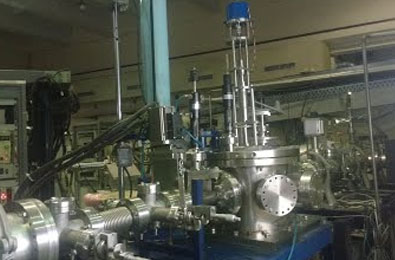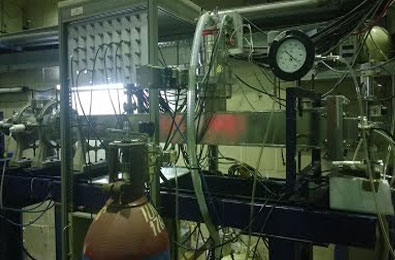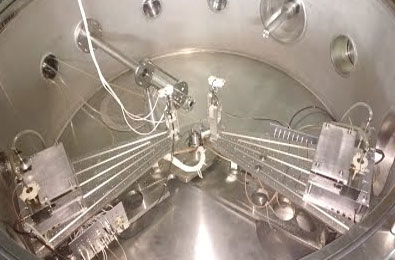त्वरक आधारित परमाणु एवं आणविक भौतिकी
अंतर-विश्वविद्यालय त्वरक केंद्र
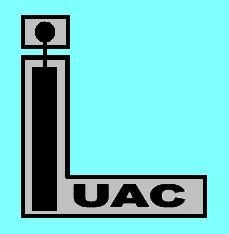
अत्यधिक आवेशित आयन (एच.सी.आई.) अत्यधिक आयनित परमाणु होते हैं। वे प्रकृति में सौर हवाओं, ऊष्मीय सितारे, पृथ्वी के ऊपरी वायुमंडल या आंधी के दौरान पृथ्वी के वायुमंडल में पाए जाते हैं। एचसीआई का अध्ययन खगोल भौतिकी, प्लाज्मा भौतिकी, त्वरक भौतिकी, आंतरिक संलयन आदि जैसे विभिन्न क्षेत्रों के लिए महत्वपूर्ण है। त्वरक-आधारित परमाणु भौतिकी अध्ययन में आयन त्वरक की मदद से उत्पादित एच.सी.आई. का अध्ययन शामिल है। एच.सी.आई. के साथ आईयूएसी में जिन प्रमुख क्षेत्रों में अनुसंधान किया जा रहा है, उनमें बीम फॉइल और बीम टू फॉइल स्पेक्ट्रोस्कोपी, सर्कुलर राइडबर्ग स्टेट्स, लाइफटाइम, हाई-रिज़ॉल्यूशन मल्टी-चैनल डॉप्लर ट्यून एक्स-रे स्पेक्ट्रोस्कोपी, पोस्ट फॉइल चार्ज स्टेट डिस्ट्रीब्यूशन पर सरफेस इफेक्ट आदि सम्मिलित हैं।
हमारा उद्देश्य विश्वविद्यालय प्रणाली के साथ खगोल भौतिकी, आयन-ऊर्जा हानि भौतिकी, परमाणु भौतिकी और प्लाज्मा भौतिकी जैसे विभिन्न अंतःविषय क्षेत्रों के साथ आयन त्वरक और विभिन्न परमाणु प्रतिक्रियाओं के साथ उत्पादित अत्यधिक आवेशित आयनों के भौतिकी के संबंधों की खोज करना है। केंद्र के साथ-साथ विश्वविद्यालयों के Ph.D. छात्र भी इस अभियान में शामिल हैं। हम छात्रों को अत्यधिक आवेशित आयनों और अंतःविषय भौतिकी के साथ भौतिकी अनुसंधान के विभिन्न अवसरों के बारे में शिक्षित करते हैं। छात्र थीसिस समस्या के लिए एक विषय चुनने के लिए स्वतंत्र हैं। हम उन्हें उनकी पढ़ाई के दौरान लगातार प्रेरित करते हैं। अंतःविषय भौतिकी अनुसंधान को विभिन्न क्षेत्रों की प्रयोगात्मक तकनीकों को नियोजित करने की आवश्यकता है और हम उन्हें अपनी प्रयोगात्मक सुविधाओं के साथ जोड़ते रहते हैं। फ्री-इलेक्ट्रॉन लेजर से उत्पादित अत्यधिक आवेशित आयनों पर भी शोध के लिए प्रयास किया जा रहा है।
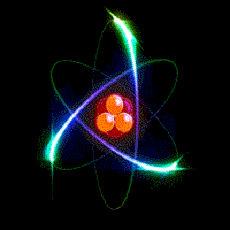
अंतःविषय भौतिकी अनुसंधान एक विषय के भीतर क्षेत्र की सीमाओं के पार विचारों और अवधारणाओं के बीच संबंधों की पड़ताल करता है। विभिन्न क्षेत्रों में काम करने वाले शोधकर्ता एक क्षेत्र में प्राप्त ज्ञान को दूसरे क्षेत्र में सीखने के अनुभव का विस्तार करने के तरीके के रूप में लागू कर सकते हैं। अंतःविषय भौतिकी अध्ययन के लिए सबसे प्रभावी दृष्टिकोण हमें एक शोध विषय चुनकर अपने अंतःविषय मार्ग का निर्माण करने में सक्षम बनाता है जो शुरुआत तक बेतुका भी लगता है। एक विषय को ढूंढना बहुत मुश्किल नहीं है जो एक विषय के भीतर अनुशासनात्मक क्षेत्रों को पार करता है। हालांकि, भौतिकी में सच्चे अंतःविषय अध्ययन को प्राप्त करने के लिए सबसे बड़ी बाधाओं में से एक विभिन्न क्षेत्रों में शोधकर्ताओं के सहयोग की आवश्यकता है। यह मुश्किल है, लेकिन असंभव नहीं है। अंतःविषय अनुसंधान तब अधिकतम होता है जब विभिन्न क्षेत्रों के पेशेवर एक सामान्य लक्ष्य को पूरा करने के लिए एक साथ काम करते हैं और शोधकर्ताओं को विभिन्न विषय क्षेत्रों के बीच संबंध बनाने में मदद करते हैं। इस तरह की अंतःक्रिया रचनात्मक प्रतिमान में निहित है, जो भौतिकी के किसी विशेष क्षेत्र के अध्ययन की तुलना में नए ज्ञान और विचारों की गहरी समझ के निर्माण की अनुमति देता है।
संपर्क व्यक्ति

डॉ. सी. पी. सफ़वान त्वरक आधारित परमाणु और आणविक भौतिकी वैज्ञानिक- एच
कार्यक्रम प्रमुख
कार्यालय : 327
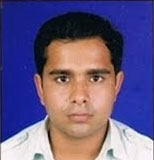
श्री दीपक कुमार स्वामी त्वरक आधारित परमाणु और आणविक भौतिकी वैज्ञानिक- डी
कार्यालय : 8868

सुविधाएं
सामान्य प्रयोजन परमाणु भौतिकी कक्ष (GPAC)
सामान्य प्रयोजन परमाणु भौतिकी कक्ष (जीपीएसी) अं.वि.त्व.के. में बीम हॉल-2 की एक बीमलाइन में 30 डिग्री पर स्थापित एक स्टेनलेस स्टील का निर्वात कक्ष है। कक्ष की ऊंचाई 316 मिमी है और इसका आंतरिक व्यास 356 मिमी है। कठोर कच्चे इस्पात के आधार पर लगे कक्ष को परमाणु भौतिकी प्रयोगों को करने के लिए डिज़ाइन किया गया था। कक्ष की आवश्यक विशेषताओं में निम्न विशेषताएं सम्मिलित ह:
- क्षैतिज पथ पर स्थापित कंप्यूटर नियंत्रित चल पन्नी सेटअप जिसका उपयोग उड़ान समय प्रयोगों के मानक समय के लिए किया जा सकता है
- एक लक्ष्य सीढ़ी में कई पन्नी रखने की व्यवस्था की जाती है।
- पोस्ट-फॉइल बीम में उत्तेजित अवस्थाओं के क्षय का निरीक्षण करने के लिए बीम अक्ष के समकोण पर दो एक्स-रे डिटेक्टरों को एक साथ लगाया जा सकता है।
- कक्ष में पोस्ट फॉइल बीम के लिए एक निकास पोर्ट है जो पोस्ट फॉइल चार्ज स्थिति विश्लेषण के लिए एक इलेक्ट्रोस्टैटिक विश्लेषक और स्थिति संवेदनशील डिटेक्टर का उपयोग करके पोस्ट-फॉइल बीम के आगे के अध्ययन की सुविधा प्रदान करता है।
- कक्ष के आधार और शीर्ष फ्लेंज में एसएसबीडी डिटेक्टरों के लिए माउंटिंग व्यवस्था जैसे विभिन्न प्रयोगात्मक उपकरणों को माउंट करने के लिए 15 डिग्री पर एम-6 टैप किए गए छेद हैं।
- चैंबर को दो घंटे के भीतर 10-7 एमबार वैक्यूम प्राप्त करने के लिए एक समर्पित 250 एल/एस टर्बो-आणविक पंप के साथ जोड़ा गया है
सीधा और झुका हुआ इलेक्ट्रोस्टैटिक विश्लेषक
अधिकतम उपज के साथ एक विशेष चार्ज स्थिति के लिए बीम ऊर्जा का चयन करने में पन्नी चार्ज के बाद की स्थिति वितरण का ज्ञान हमेशा उपयोगी होता है। पोस्ट फॉइल में आवेश अवस्था अंश का अध्ययन करने के लिए, हम एक नई तकनीक विकसित करने की प्रक्रिया में हैं जिसमें एक इनक्लाइंड एंड स्ट्रेट इलेक्ट्रोस्टैटिक एनालाइजर (आईएसईएसए) शामिल है जिसमें एक प्लेट को समानांतर रखा जाता है और दूसरी को बीम हॉल-2 में बीम अक्ष के सापेक्ष एक निश्चित कोण पर झुकाए रखा जाता है। इसलिए एक आईएसईएसए बीम अक्ष के साथ में असममित है। प्लेटों पर वोल्टेज को इस तरह से लगाना आवश्यक है कि बीम झुके हुए प्लेट की ओर विक्षेपित हो जाए। प्रवेश द्वार पर प्लेटों के बीच एक छोटा सा अंतराल (10 मिमी) उच्च क्षेत्र के कारण बड़े विक्षेपण का कारण बनता है। जैसे-जैसे आयन आगे बढ़ते हैं, अंतर बढ़ता है (एक निचले क्षेत्र का कारण बनता है) ताकि आयन प्लेट से टकराये बिना बाहर निकल सकें। एक विक्षेपित प्लेट का यह झुकाव चार्ज अवस्थाओं के बेहतर रिज़ॉल्यूशन की अनुमति देता है और प्लेट से टकराये बिना निकलने वाले चार्ज अवस्थाओं की संख्या को भी बढ़ाता है। आईएसईएसए की धुरी के साथ बीम को संरेखित करने के लिए दो बीम कॉलिमेटिंग स्लिट सिस्टम रखे गए हैं। आईएसईएसए का उपयोग पोस्ट फॉइल चार्ज अवस्था को विक्षेपित करने के लिए किया जा रहा है ताकि क्षेत्र में विक्षेपित आयन बाहर निकलने पर प्लेट से न टकराएं। आईएसईएसए को पार करने के बाद आयनों को प्रत्यक्ष रूप से स्थानांतरित करने के लिए 1.5 मीटर लंबे ट्रैपर ड्रिफ्ट ट्यूब चैम्बर का उपयोग किया जाता है। ट्रैपर ड्रिफ्ट ट्यूब चैम्बर 220 मिमी लंबा पोजीशन सेंसिटिव प्रोपोरशनल काउंटर (PSPC) लगाने का अवसर प्रदान करता है। पी-10 गैस से भरे पीएसपीसी का उपयोग एक साथ विभिन्न आवेश अवस्थाओं की स्थिति को मापने के लिए किया जाता है। बीमलाइन के अंत में एक व्यूपोर्ट होता है और वैक्यूम चैम्बर के अंत में रखे जाने वाले फैराडे कप का उपयोग पूरे प्रयोग में बीम करंट की निगरानी के लिए किया जाता है। ट्रैपर ड्रिफ्ट चैम्बर और आईएसईएसए के अंदर एक उच्च वैक्यूम बनाने के लिए एक वैक्यूम नियंत्रण प्रणाली तैयार की गई है। वांछित निर्वात प्राप्त करने के लिए, ट्रैपर ड्रिफ्ट ट्यूब चैम्बर पर एक टर्बो पंप (300 एल/सेकंड) लगाया जाता है। आईएसईएसए के अंदर निर्वात को मापने के लिए, एक पिरानी गेज और एक पूर्ण रेंज कोल्ड कैथोड गेज का अधिक उपयोग किया जाता है। और अधिक... ![]()
मल्टी चैनल डॉप्लर ट्यून्ड स्पेक्ट्रोस्कोपी
डॉप्लर ट्यून्ड स्पेक्ट्रोमीटर तेज उत्तेजित आयन किरण- पन्नी से उत्सर्जित एक्स-रे के लिए एक नया स्पेक्ट्रोमीटर है। स्पेक्ट्रोमीटर उत्सर्जन स्पेक्ट्रम को उपयुक्त फिल्टर सामग्री के अवशोषण स्पेक्ट्रम की ज्ञात विशेषताओं (जैसे के-एज) के साथ संयोग में लाने के लिए एक बड़े डॉपलर शिफ्ट का उपयोग करता है। स्रोत पन्नी और डिटेक्टर के बीच फिल्टर सामग्री के साथ बीम और डिटेक्टर के बीच के कोण को बदलकर ट्यूनिंग पूरी की जाती है। फिल्टर के बीम वेग, कोण और अवशोषण स्पेक्ट्रम का ज्ञान बीम से उत्सर्जन स्पेक्ट्रम निर्धारित करने के लिए पर्याप्त है। इस सेटअप में एक्स-रे डिटेक्टर के रूप में एक लंबे एक-आयामी स्थिति-संवेदनशील आनुपातिक काउंटर का उपयोग किया जाता है। एकल एनोड तार के साथ स्थिति संवेदनशील आनुपातिक काउंटर का एक्स-रे डिटेक्टर के लिए 1 एटीएम तक उच्च दबाव गणना गैस का उपयोग करके परीक्षण किया गया था। एक स्थिति संवेदी इलेक्ट्रोड के रूप में, एक बैकगैमन पैटर्न के साथ एक फ्लैट-कैथोड का उपयोग किया जाता है। 1550 वोल्टेज पर 900 बार के उपयोग के साथ 5.9 केवी एक्स-रे के लिए 591 माइक्रोन का स्थिति रिज़ॉल्यूशन प्रदान करने के लिए स्थिति रीडआउट सफलतापूर्वक किया गया है। एक अद्वितीय सोलर स्लिट असेंबली एक लंबे एक-आयामी स्थिति-संवेदनशील आनुपातिक काउंटर के साथ मिलकर हमें विभिन्न कोणों पर अलग-अलग एक्स-रे शिखर प्राप्त करने में सक्षम बनाती है, जो हमें एक शॉट में बड़ी संख्या में कोणों को कवर करने की अनुमति देता है। एक लाइफ टाइम सेटअप का भी उपयोग किया जाता है। और अधिक... ![]()
लाइफ टाइम सेटअप
जीपीएसी में मानक बीम-फॉइल और बीम-टू-फॉइल स्पेक्ट्रोस्कोपी के लिए लाइफ टाइम सेटअप का उपयोग किया जाता है। यह सेटअप 100 मिमी उड़ान की लंबाई प्रदान करता है जो मेटास्टेबल अवस्थाओं के लाइफ टाइम अध्ययन तक पहुंच प्रदान करता है। लक्ष्य की चाल को रैखिक बनाने के लिए तीन एक्चुएटर मोटरों का उपयोग किया जाता है। इन मोटरों की अल्पतमांक 1 माइक्रोन है। हाल ही में किए गए एक प्रयोग में विभिन्न किरण ऊर्जाओं पर अत्यधिक आवेशित टाइटेनियम आयनों की मेटास्टेबल अवस्थाओं का आजीवन अध्ययन सम्मिलित है।
निम्न ऊर्जा आयन बीम सुविधा
105 डिग्री बीम लाइन में सेटअप का उपयोग मुक्त अणुओं के आणविक पृथक्करण गतिशीलता का अध्ययन करने के लिए किया जाता है जब उन पर विभिन्न आवेश अवस्थाओं के ऊर्जावान सकारात्मक आयनों द्वारा बमबारी की जाती है। इसमें एक माइक्रोचैनल प्लेट है जिसमें रिकॉइल आयन का पता लगाने के लिए एक स्थिति संवेदनशील डिटेक्टर, निकाले गए इलेक्ट्रॉनों के लिए एक चैनलट्रॉन और टक्कर के बाद प्रक्षेप्य का पता लगाने के लिए एक और माइक्रोचैनल प्लेट + डिले लाइन डिटेक्टर है। मुक्त अणु एक प्रवाहकीय जेट द्वारा प्राप्त किए जाते हैं।
प्रकाशन
- Experimental
evidence of beam-foil plasma creation during ion-solid interaction, Prashant
Sharma and Tapan Nandi, PHYSICS OF PLASMAS 23, 083102 (2016), Link

- Development of a multipurpose beam foil spectroscopy set-up for the low cross-section measurements, Gaurav Sharma, T. Nandi, H.G. Berry, Nitin K. Puri, Nuclear Instruments and Methods in Physics Research B 380 (2016) 26–3
- X-ray spectroscopy: An
experimental technique to measure charge state distribution during ion–solid
interaction, P. Sharma and
T. Nandi, Phys. Lett. A 380, 182–187 (2016), Link

- Theoretical studies on shaking processes in
nuclear transfer reactions, Prashant
Sharma and Tapan Nandi, Nuclear Physics A 941 (2015) 265–272, Link

- Emerging perspectives of beam-foil spectroscopy, Adya P. Mishra and Tapan Nandi, ScienceJet 2015, 4: 149
- Combined Effect of Cascade through circular Orbits and Stark Quenching on the Decay of n=2 to n=1transition of H- like Fe in Beam Foil Excitation, Yogesh Kumar, Adya Mishra and T. Nandi, JQSRT 148, 22-26 (2014), Link

- Resonance
in the population of circular Rydberg states formed in beam-foil excitation, A.P. Mishra, T. Nandi and B.N. Jagatap, JQSRT, 120 ,114 (2013), Link

- Fast Ion Surface Energy Loss and Straggling in the Surface Wake Fields, T. Nandi, K. Haris, Hala, Gurjeet Singh, Pankaj Kumar, Rajesh Kumar, S.K. Saini, S.A. Khan, Akhil Jhingan, P. Verma, A. Tauheed, D. Mehta, H.G. Berry, PRL 110, 163203 (2013), Link

- Radiative resonant energy transfer process in projectile-like
ion formed in beam-foil interaction, A.P. Mishra, T. Nandi and Jagatap, JQSRT, 118, 70 (2013), Link

- Radiative
resonant energy transfer: A new excitation mechanism in beamfoil interaction, T.
nandi,Mumtaz Oswal, Sunil Kumar, Akhil Jhingan, S.R. Abhilash, S.
Karmakar, JQSRT (Letter) , (2012), Link

- Lifetime of 1s2s2p 4P05/2 in V20+ using beam-foil technique, T. Nandi, P. Marketos, P. Joshi, R.P. Singh, C.P. Safvan, P. Verma, A. Mandal, A. Roy and R.K. Bhowmik, Phys. Rev A 66, 052510 (2002), Link

- Role of Ion-Surface Interaction at the Entry Surface on the Energy Loss of Highly Charged Slow Ions in Solids, Tapan Nandi, Open Journal of Microphysics, 2011, 1, 53-57, Link

- Observation of transitions involving core-excited states in Ar III & Ar IV and high-lying singly excited states in Ar IAr IV, T. Nandi, A.P. Mishra, B.N. Jagatap, JQSRT 112, 221-2778 (2011)
- Measurement of
wakefield intensity, T. Nandi and B.P. Mohanty, J. Phys. B 42,
225402-5 (2009), Link

- Experimental confirmation of Circular Rydberg states with projectile like ions, T. Nandi, J. Phys. B 42, 125201-4(2009)
- Collision-induced intra-shell transitions in He-like ions, T. Nandi, J. Phys. B 42, 061002 (2009) (Fast Track Communication)
- Effect of satellite lines on the 1s2p 3Po 2 level lifetimes in He-like ions, T. Nandi, JQSRT, 109, 2725-2730(2008)
- Formation of the circular Rydberg states in ion-solid collisions, T. Nandi, Astrophys. J., 673, L103-L106(2008)
- Comparison of experimental and theoretical efficiency of HPGe X-ray detector, B.P. Mahanty, P. Balouria, M.L. Garg, T. Nandi, V.K. Mittal, and I.M. Govil, Nucl. Instr. Meth. 584, 186-190 (2008)
- Selective population of the 1s2s 1S0 and 1s2s 3S1 states of He-like uranium, J. Rzadkiewicz, Th. Sthlker, D. Bana, H. F. Beyer,1 F. Bosch, C Brandau, C. Z. Dong, S. Fritzsche, A. Gojska, A. Gumberidze, S. Hagmann, D. C. Ionescu, C. Kozhuharov, T. Nandi, R. Reuschl, D. Sierpowski, U Spillmann, A. Surzhykov, S. Tashenov, M. Trassinelli, and S. Trotsenko, Phys. Rev. A 74, 012511-16 (2006)
- Beam-single and beam-two-foil experimental facility to study physics of highly charged ions, Nissar Ahmad, A. Wani, R Ram, S Abhilash, Rakesh Kumar, J K Patnaik, Sankar De, R Karn, Tapan Nandi, Rev. Sci. Instru. 77, 033107-11(2006)
- Reliable measurement of the Li-like 22Ti48 1s2s2p 4Po5/2 level lifetime by beam-foil and beam-two-foil experiments, T. Nandi, Nissar Ahmad, A.A. Wani, P. Marketos, Phys. Rev. A. 73, 032509-14(2006)
- L x-ray production in 57La, 58Ce, 60Nd and 62Sm by 35.60 MeV carbon and oxygen ions, R. Mehta, N.K. Puri, Ajay Kumar, A. Kumar, B.P. Mahanty, P. Balouria, I.M. Govil, M.L. Garg, T. Nandi, A. Ahamad and G. Lapicki, Nuclear Inst. and Methods in Physics Research, B241 63-68(2005)
- Lifetime of 1s2s2p 4P05/2in Ti19+by beam-foil and beam-two-foil experiments, T. Nandi, Nissar Ahmad, A.A. Wani, and P. Marketos, Phys. Rev. A.72, 022711-16(2005)
- Inclined plate electrostatic charge state analyzer , T. Nandi, Nissar Ahmad, Hemant K. Singh, and R.G. Pillay., Rev. Sci. Instr. 75, 5041-5043(2004)
- Lifetime of 1s2p 3Po 2 using Beam-two-foil experiments, T. Nandi, A.A. Wani, Nissar Ahmad, P. Marketos, R.P. Singh, R. Ram,and S. Ahmad, J. Phys.B.37 703-710 (2004)
- Lifetime of 1s2s2p 4Po 5/2 using Beam-foil techniques , T. Nandi, P. Marketos, P. Joshi, R.P. Singh, C.P. Safvan, P. Verma, A.Mandal, A. Roy,and R.K. Bhowmik Phys. Rev. A 66, 052510-15(2002)
- K and L x-ray production cross sections and intensity ratios of rare earth elements for proton impact in the energy range of 20-25 MeV, M Hajivaliei, Sanjiv Puri, M.L. Garg, D. mehta, A. Kumar, S.K. Chamoli, D.K. Avasthi, A. mandal, T. Nandi, K.P. Singh, Nimal Singh, I.M. Govil, Nucl.Instru.Meths. B160 203-215 (2000)
- Lifetimes of some O II levels by beam-foil experiments , T. Nandi, P. Marketos, N. Bhattacharya, and S.K. Mitra., J. Phys.B 32 769-778(1999)
- Study of secondary electron emission from various targets due to 100 MeV Si7+ ions, R.S. Chauhan, V.K.Mittal, T. Nandi, A.Mandal, and D.K. Avasthi, Vacuum 48, 1031(1998)
- Theoretical Lifetimes for Certain O II Levels P.Marketos and Tapan Nandi, Z. Phys. D42, 237-242 (1997)
- L-shell Ionization Studies of Au with _-particle and Lithium Ion Bombardments, B.B. Dhal, Tapan Nandi, H.C. Padhi, and D. Trautmann, J. Phys.B28 3559-68 (1995)
- Experimental Evidence in Favour of Stark Mixing of Atomic L-subshell States in Boron Impact of Au and Bi, H.C. Padhi, B.B. Dhal,Tapan Nandi, and D. Trautmann, J. Phys.B28 L59-L63(1995)
- L-shell Ionization Studies of Au and Bi with by 4.8-8.8 MeV Boron Ion Bombardment, B.B. Dhal, Tapan Nandi, and H.C. Padhi, Nucl. Instr. Meth. B101, 327-34 (1995)
- L-shell Ionization Studies of Pb and Bi with alpha-particle, B.B. Dhal,Tapan Nandi, and H.C. Padhi, Phys. Rev.A49 329-36(1994)
- Spectroscopy of Highly Excited States in Na II-IV ions, Tapan Nandi, M.B. Kurup, K.G. Prasad, and P. Marketos, J. Phys.B28 685-92(1995)
- Study of Core Excited States in Neutral Na, Tapan Nandi, M.B. Kurup, K.G. Prasad, and P.M.R. Rao, J. Phys. B27 1975-80(1994)
- Lifetimes and Excitation Functions of Levels in Ar II-IV, Tapan Nandi, M.B. Kurup, K.G. Prasad, P.M.R. Rao, S. Padmanabhan, G. Krishnamurthy and A.P. Mishra, JQSRT 49 389-400 (1993)
Alumni
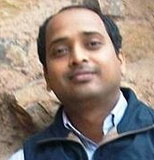
Dr. Ranjeet Karn Highly charged ions, x-ray astronomy
Assistant Professor, Department of Physics Jam Co-Op College
9631298090
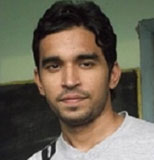
Dr. Prashant Sharma Post Doc Rehovot Israel
Assistant Professor, Department of Physics Jam Co-Op College
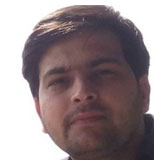
Dr. Guarav Sharama X-ray spectroscopy
Ph.D., Delhi Technicle University
8860057387
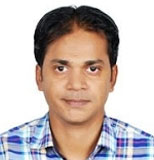
Users
- Mr. Basu Kumar Jai Prakash, Viswavidyalaya, Chapra, Bihar
- Dr. Punita Verma Delhi University, Delhi
- Ruchika Gupta Delhi University, Delhi
- Ch. Vikar Ahmad Delhi University, Delhi
- Dr. Mumtaj Punjab University, Punjab
- Shashank Singh Punjab University, Punjab
- Dr. Debasis Mitra Kalyani University, Kolkata
- Soumya Chatterjee Kalyani University, Kolkata
- Dr. Saneev Puri Punabi University, Patiala
- Shehla Punabi University, Patiala
- Amarjeet Singh Punabi University, Patiala
अद्यतन की तिथि 03/09/2024




